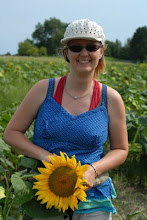I'll share below how I do it, but don't think it's my original idea - lots of people use this stuff in all kinds of genius creative ways...
 As you can see, the texture is bubble wrap, but when used as a mold it looks a lot like the inside of a beehive - which is exactly why people like me love to use it for honey type soaps!
As you can see, the texture is bubble wrap, but when used as a mold it looks a lot like the inside of a beehive - which is exactly why people like me love to use it for honey type soaps!First off, cut the bubble wrap to size and fit into your mold. I use dollar store drawer dividers, tape the wrap on each long end, and then stack it into another divider so it does not bow out as much when the soap is added (these things are not very sturdy).
 Pour in the soap, making sure the wrap is all the way to the bottom and into all the nooks and crannies. Otherwise soap will puddle around the wrap, the corners will become rounded, and the soap on the outside will be discarded.
Pour in the soap, making sure the wrap is all the way to the bottom and into all the nooks and crannies. Otherwise soap will puddle around the wrap, the corners will become rounded, and the soap on the outside will be discarded. One soap bread is demolded (back), one is waiting to go.
One soap bread is demolded (back), one is waiting to go. Turn the mold upside down, release the soap from the mold and gently drop on work surface. Then unpeel the wrap's edges to slowly but steadily pull of the wrap from the soap bread. I do not reuse the wrap but I do have enough from my photography business anyway.
Turn the mold upside down, release the soap from the mold and gently drop on work surface. Then unpeel the wrap's edges to slowly but steadily pull of the wrap from the soap bread. I do not reuse the wrap but I do have enough from my photography business anyway.And that's all, folks!
A couple things to think of, tho... regular soap needs to be insulated (even heated a bit) to reach the gel stage. Milk soap only needs some insulation, I find a piece of insulation foam on top of the mold to be enough, as milk soaps runs hot. Add honey to the mix, and the soap heats up really, really easy. So - DO NOT INSULATE, COVER or sit CLOSE TOGETHER. The soap WILL overheat!
And this is for regular milk with honey soap! Add insulating bubble wrap to the mix and you're in trouble... What I found works real well is to remove the bottom dividers when the soap set enough to retain shape (about an hour) and place the molds right onto a cold concrete floor - it sucks the heat right out of the soap just as it does out of my feet :)























